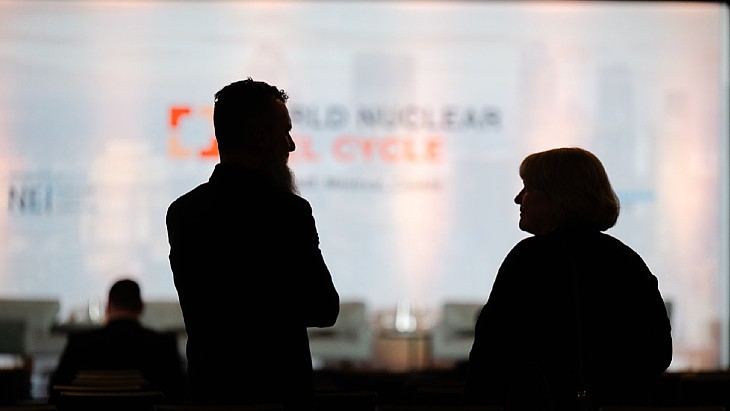Belgian research reactor tests high-performance LEU fuel
.jpg)
The BR2 is one of three operating research reactors at SCK-CEN in Mol, northeast Belgium. In operation since 1963, the BR2 is one of the oldest research reactors in Western Europe. The reactor is permitted to operate until its next periodic safety review in 2026, when a decision on operation for a subsequent 10 years may be taken.
SCK-CEN is developing a completely new LEU fuel type in close collaboration with the USA aimed at delivering the same performance as HEU fuel. It plans to switch BR2 from using HEU to the new LEU in 2026 if a decision is made to continue operating the reactor.
"By removing the highly-enriched uranium from the fuel, it helps to prevent the possible spread of that material," SCK-CEN said. "In this way, SCK-CEN contributes with a proliferation-resistant nuclear fuel, thus contributing to a safer world."
"The nuclear fuel cannot simply be changed overnight," SCK-CEN noted. "The switch to this fuel requires extensive testing and the preparation of a significant safety file. SCK-CEN must prove to the Federal Agency for Nuclear Control (FANC) – the nuclear regulatory authority in Belgium – that the new fuel type is just as safe as the current one. Moreover, the research reactor must deliver the same technical performance using this new fuel type."
"In highly-enriched uranium, we can split almost all uranium atoms. In low-enriched uranium, only one atom in five is fissile," said project leader Jared Wight. "However, the nuclear fuel must be able to perform to the same level, so that BR2 can perform its vital missions. It's like a driver filling their car's tank with 20% petrol, and still wanting to travel the same distance at the same speed as they would on a full tank."
The new LEU fuel has already completed several demonstration phases. In the first phase, small samples were tested in moderate conditions, with the power and burnup fraction limited. In the second phase, full-size, individual fuel plates were exposed to higher power and a higher burnup fraction. In the third phase, these fuel plates were incorporated into future fuel assemblies and tested in real conditions. Each step in this process has been closely monitored by FANC.
Wight said that three LEU fuel assemblies have now been tested in real conditions over the past two BR2 cycles.
"After each cycle, we thoroughly check each fuel assembly," he said. "We are curious to obtain the [latest] results, but we expect them to be acceptable, just like the previous tests, demonstrating that the fuel assemblies remained perfectly undamaged, even under high power."
"SCK-CEN's successful completion of the second irradiation cycle using low-enriched uranium fuel for BR2 is a major milestone," said Corey Hinderstein, Deputy Administrator for Defense Nuclear Non-proliferation at the US Department of Energy's National Nuclear Security Administration. "This is the first time this high performance low-enriched uranium fuel has been used and is a crucial step toward the conversion of BR2 by 2026. Their progress sets a global example for reactor conversions to low-enriched uranium and demonstrates our ability to achieve non-proliferation goals while maintaining scientific excellence."
The BR2 accounts for about a quarter of the global production of radioisotopes for medical and industrial purposes, including for cancer therapy and medical imaging. It also produces doped silicon, which forms a semiconductor material that provides the basic substance for electronic components.
Most of the world's research reactors were built in the 1960s and 1970s using technology that required HEU - with enrichment levels as high as 98% - to perform experiments. HEU targets have also been used in the production of medical radioisotopes. However, such HEU could potentially be used to make a nuclear weapon and is therefore seen as a proliferation risk. Much of this research can now be carried out using LEU, of which uranium-235 accounts for less than 20%.
_49098.jpg)
_57190.jpg)
_70526.jpg)
_75453.jpg)






_50521.jpg)

